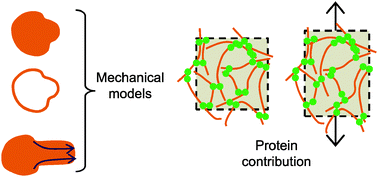Study of the influence of actin-binding proteins using linear analyses of cell deformability
Abstract
The actin cytoskeleton plays a key role in the deformability of the cell and in mechanosensing. Here we analyze the contributions of three major actin cross-linking proteins, myosin II, α-actinin and filamin, to cell deformability, by using micropipette aspiration of Dictyostelium cells. We examine the applicability of three simple mechanical models: for small deformation, linear viscoelasticity and drop of liquid with a tense cortex; and for large deformation, a Newtonian viscous fluid. For these models, we have derived linearized equations and we provide a novel, straightforward methodology to analyze the experiments. This methodology allowed us to differentiate the effects of the cross-linking proteins in the different regimes of deformation. Our results confirm some previous observations and suggest important relations between the molecular characteristics of the actin-binding proteins and the cell behavior: the effect of myosin is explained in terms of the relation between the lifetime of the bond to actin and the resistive force; the presence of α-actinin obstructs the deformation of the cytoskeleton, presumably mainly due to the higher molecular stiffness and to the lower dissociation rate constants; and filamin contributes critically to the global connectivity of the network, possibly by rapidly turning over cross-links during the remodeling of the cytoskeletal network, thanks to the higher rate constants, flexibility and larger size. The results suggest a sophisticated relationship between the expression levels of actin-binding proteins, deformability and mechanosensing.


 Please wait while we load your content...
Please wait while we load your content...